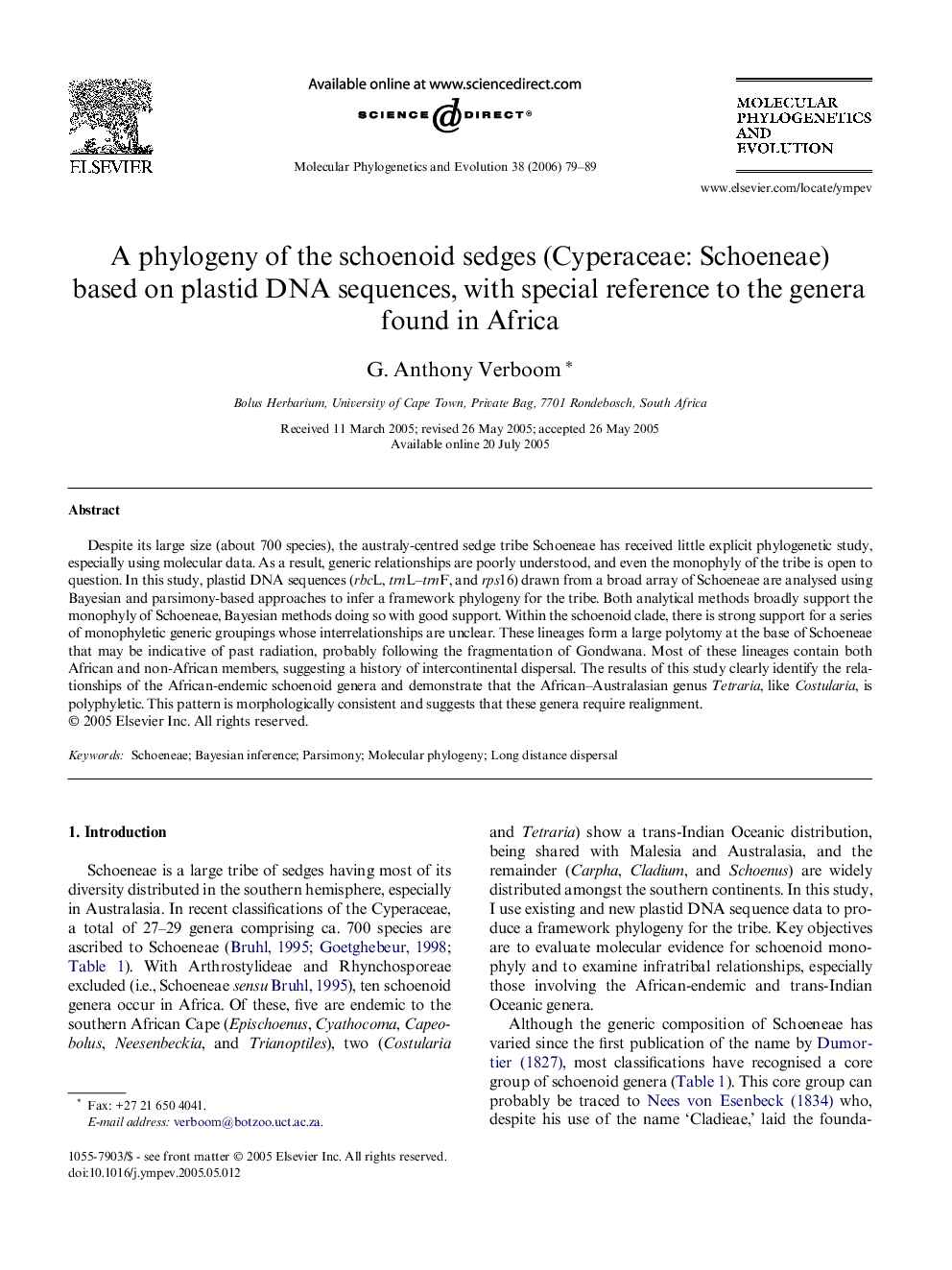| Article ID | Journal | Published Year | Pages | File Type |
|---|---|---|---|---|
| 2836143 | Molecular Phylogenetics and Evolution | 2006 | 11 Pages |
Despite its large size (about 700 species), the australy-centred sedge tribe Schoeneae has received little explicit phylogenetic study, especially using molecular data. As a result, generic relationships are poorly understood, and even the monophyly of the tribe is open to question. In this study, plastid DNA sequences (rbcL, trnL–trnF, and rps16) drawn from a broad array of Schoeneae are analysed using Bayesian and parsimony-based approaches to infer a framework phylogeny for the tribe. Both analytical methods broadly support the monophyly of Schoeneae, Bayesian methods doing so with good support. Within the schoenoid clade, there is strong support for a series of monophyletic generic groupings whose interrelationships are unclear. These lineages form a large polytomy at the base of Schoeneae that may be indicative of past radiation, probably following the fragmentation of Gondwana. Most of these lineages contain both African and non-African members, suggesting a history of intercontinental dispersal. The results of this study clearly identify the relationships of the African-endemic schoenoid genera and demonstrate that the African–Australasian genus Tetraria, like Costularia, is polyphyletic. This pattern is morphologically consistent and suggests that these genera require realignment.
